- Order-7 triangular tiling
-
Order-7 triangular tiling 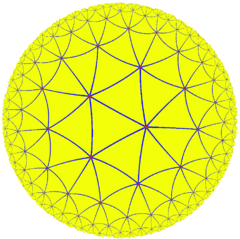
Poincaré disk model of the hyperbolic planeType Regular hyperbolic tiling Vertex figure 37 Schläfli symbol(s) {3,7} Wythoff symbol(s) 7 | 3 2 Coxeter-Dynkin(s) 




Coxeter group [7,3] Dual Order-3 heptagonal tiling Properties Vertex-transitive, edge-transitive, face-transitive In geometry, the order-7 triangular tiling is a regular tiling of the hyperbolic plane with a Schläfli symbol of {3,7}.
Contents
Related polyhedra and tiling
This tiling is topologically related as a part of sequence of regular polyhedra with Schläfli symbol {3,p}.
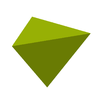
{3,3}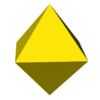
{3,4}
{3,5}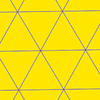
{3,6}
{3,7}
{3,8}
{3,9}The dual tiling is the order-3 heptagonal tiling.

order-3 heptagonal tiling
order-7 triangular tilingWythoff constructions yields further uniform tilings, yielding eight uniform tilings, including the two regular ones given here.
Hurwitz surfaces
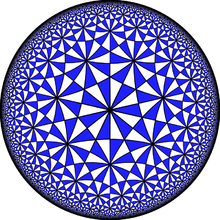 The symmetry group of the order-7 triangular tiling has fundamental domain the (2,3,7) Schwarz triangle, which yields this tiling.
The symmetry group of the order-7 triangular tiling has fundamental domain the (2,3,7) Schwarz triangle, which yields this tiling.
The symmetry group of the tiling is the (2,3,7) triangle group, and a fundamental domain for this action is the (2,3,7) Schwarz triangle. This is the smallest hyperbolic Schwarz triangle, and thus, by the proof of Hurwitz's automorphisms theorem, the tiling is the universal tiling that covers all Hurwitz surfaces (the Riemann surfaces with maximal symmetry group), giving them a triangulation whose symmetry group equals their automorphism group as Riemann surfaces.
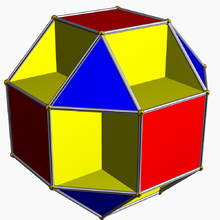 The small cubicuboctahedron is a polyhedral immersion of the Klein quartic,[1] which, like all Hurwitz surfaces, is a quotient of this tiling.
The small cubicuboctahedron is a polyhedral immersion of the Klein quartic,[1] which, like all Hurwitz surfaces, is a quotient of this tiling.
The smallest of these is the Klein quartic, the most symmetric genus 3 surface, together with a tiling by 56 triangles, meeting at 24 vertices, with symmetry group the simple group of order 168, known as PSL(2,7). The resulting surface can in turn be polyhedrally immersed into Euclidean 3-space, yielding the small cubicuboctahedron.[1]
The dual order-3 heptagonal tiling has the same symmetry group, and thus yields heptagonal tilings of Hurwitz surfaces.
References
- ^ a b (Richter) Note each face in the polyhedron consist of multiple faces in the tiling – two triangular faces constitute a square face and so forth, as per this explanatory image.
- John H. Conway, Heidi Burgiel, Chaim Goodman-Strass, The Symmetries of Things 2008, ISBN 978-1-56881-220-5 (Chapter 19, The Hyperbolic Archimedean Tessellations)
- The Beauty of Geometry: Twelve Essays (1999), Dover Publications, LCCN 99-35678, ISBN 0-486-40919-8 (Chapter 10: Regular honeycombs in hyperbolic space)
- Richter, David A., How to Make the Mathieu Group M24, http://homepages.wmich.edu/~drichter/mathieu.htm, retrieved 2010-04-15
See also
- List of regular polytopes
- List of uniform planar tilings
- Tilings of regular polygons
- Triangular tiling
- Uniform tilings in hyperbolic plane
External links
- Weisstein, Eric W., "Hyperbolic tiling" from MathWorld.
- Weisstein, Eric W., "Poincaré hyperbolic disk" from MathWorld.
- Hyperbolic and Spherical Tiling Gallery
- KaleidoTile 3: Educational software to create spherical, planar and hyperbolic tilings
- Hyperbolic Planar Tessellations, Don Hatch

This geometry-related article is a stub. You can help Wikipedia by expanding it.
